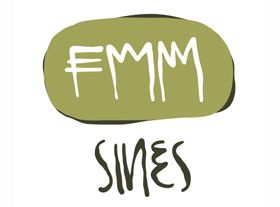Borba
Borba
Towns and Villages
Borba was founded long ago when the Iberian Peninsula was occupied by Gallo-Celtic tribes, although the town's importance and development are, of course, closely linked to the Christian Reconquest and the defence of the Portuguese territory.
Borba was conquered by the Christians from the Moors in 1217, during the reign of D. Afonso II, who immediately ordered the building of the castle handing control of the region to the Order of São Bento de Avis. His successor, D. Dinis, who established the borders of Portugal with the signing of the Treaty of Alcanices in 1297, included Borba in the territory's line of defence, due to its location close to the border with Spain. In 1302, he awarded the town a charter, ordered the walls to be strengthened and established the region´s administrative boundary. The perimeter of the municipality was then established in accordance with the limits of the neighbouring towns: Elvas, Estremoz and Vila Viçosa. In the 16th century, the charter was renewed by D. Manuel I.
The town was once again to play an important role in the defence of the territory during the 17th century, in the Wars for the Restoration of Independence waged by Portugal against Spain. The last great battle was fought in the immediate vicinity, at Montes Claros, in 1665. The Portuguese victory on this site was marked by a commemorative Monument and by the building of the Ermida de Nossa Senhora da Vitória.
If you look closely as you walk through the town, you will see a predominance of marble on the frames of the doors and windows, chimney pots, street signs and monuments. This fact is explained by the existence of several quarries in the region producing marble of the very highest quality. The Parish Church (15th century), the Igreja de São Bartolomeu (16th century), the Convento das Servas de Cristo (17-18th century) and the Fonte das Bicas (18th century) are all fine examples of how marble has been put to use in the town.
One of the best times for visiting Borba is during the Festa do Vinho e da Vinha (Wine Festival), in November. It is also an ideal occasion for tasting the wine produced in this region and discovering the local handicraft and cuisine.
Borba was conquered by the Christians from the Moors in 1217, during the reign of D. Afonso II, who immediately ordered the building of the castle handing control of the region to the Order of São Bento de Avis. His successor, D. Dinis, who established the borders of Portugal with the signing of the Treaty of Alcanices in 1297, included Borba in the territory's line of defence, due to its location close to the border with Spain. In 1302, he awarded the town a charter, ordered the walls to be strengthened and established the region´s administrative boundary. The perimeter of the municipality was then established in accordance with the limits of the neighbouring towns: Elvas, Estremoz and Vila Viçosa. In the 16th century, the charter was renewed by D. Manuel I.
The town was once again to play an important role in the defence of the territory during the 17th century, in the Wars for the Restoration of Independence waged by Portugal against Spain. The last great battle was fought in the immediate vicinity, at Montes Claros, in 1665. The Portuguese victory on this site was marked by a commemorative Monument and by the building of the Ermida de Nossa Senhora da Vitória.
If you look closely as you walk through the town, you will see a predominance of marble on the frames of the doors and windows, chimney pots, street signs and monuments. This fact is explained by the existence of several quarries in the region producing marble of the very highest quality. The Parish Church (15th century), the Igreja de São Bartolomeu (16th century), the Convento das Servas de Cristo (17-18th century) and the Fonte das Bicas (18th century) are all fine examples of how marble has been put to use in the town.
One of the best times for visiting Borba is during the Festa do Vinho e da Vinha (Wine Festival), in November. It is also an ideal occasion for tasting the wine produced in this region and discovering the local handicraft and cuisine.




 Explore
Explore 
 Remember and Share
Remember and Share 


